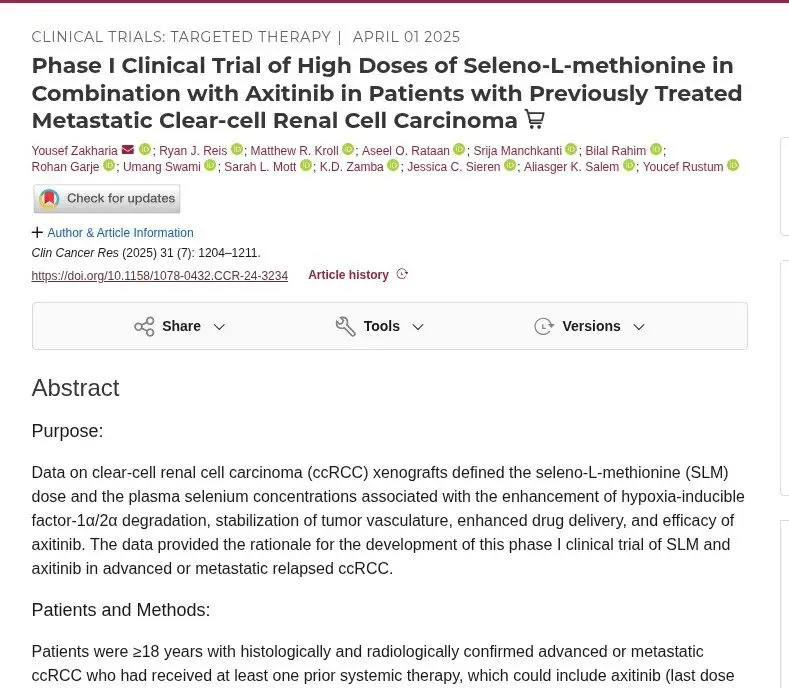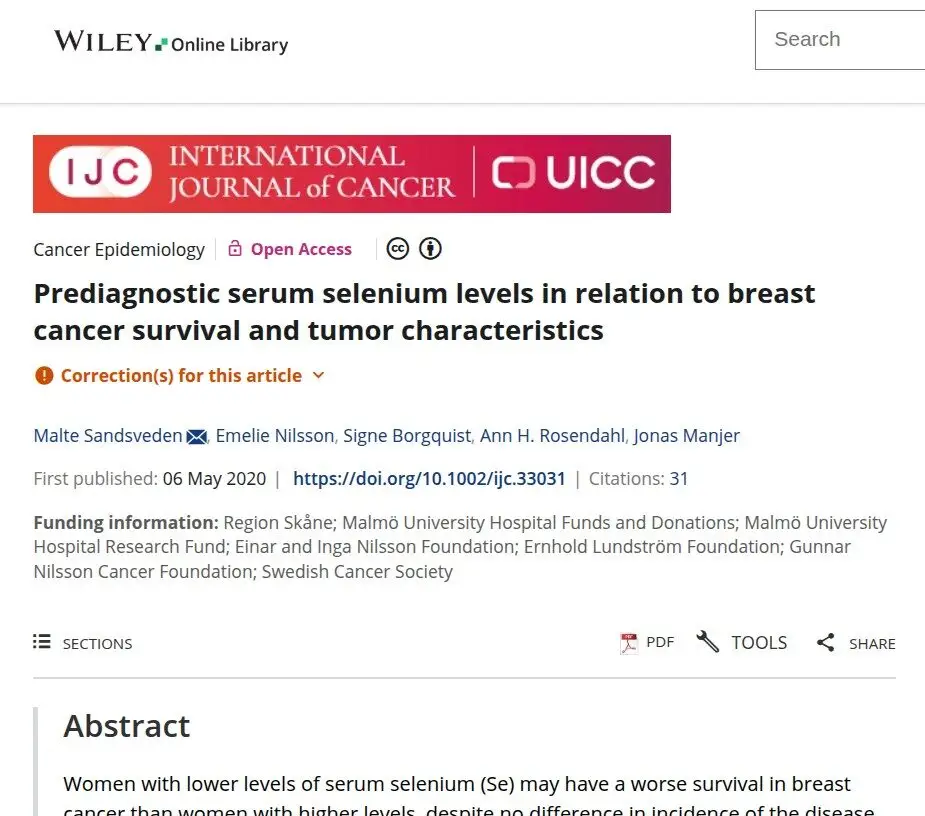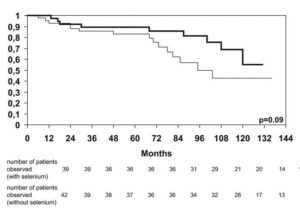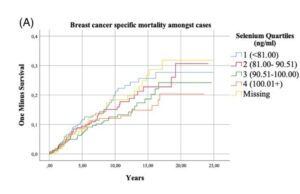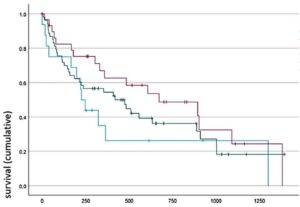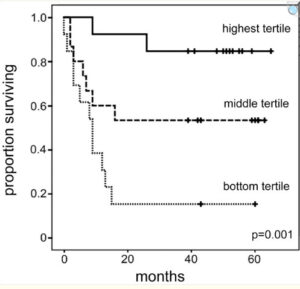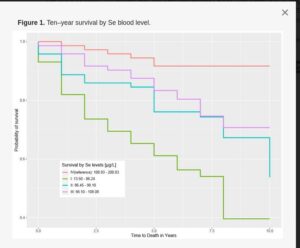Preliminary findings in 27 patients with advancing kidney cancer, having ceased treatment with targeted therapies including axitinib TKIs at least 6 months earlier. Now re-treated with 5mg axitinib and “high” dose L-selenomethionine (organic form of selenium supplements). Selenium is strongly depleted by cancer related inflammation especially in later stages, so “high” in relation to an recommedended daily minimum is a relative term.
Four patient in three groups took 2500, 3000 or 4000 µg given orally twice daily for 14 days, and the researchers report over 50% response rate resulting in nearly 15 months progression free and 20 months overall survival in these late stage patients having reached treatment failure prior to the trial with their first line therapy.
An earlier phase one trial in twelve patients https://ascopubs.org/doi/10.1200/JCO.2018.36.6_suppl.630 . Four patient in three groups took 2500, 3000 or 4000 µg given orally twice daily for 14 days, followed by once a day in combination with the standard dose of axitinib. In the 4000 mcg group 2 of 4 patients have ongoing complete responses at around 30 months, one had a 24 month partial response. Lower responses were measured in the other groups. Selenium appeared to stabilize tumor vasculature, reduce resistance and increase the delivery and efficacy of axitinib. Very similar to that of functional egg and oat products in the foods library.
Commercial supplements mainly have 200µg dose size while a single brazil nut might give 50 to 100µg. Whilst no side effects are reported here, and the study was limited duration, selenium toxicity is a public health concern though few instances are reported. Benefits for vascular health are occassionally reported but not consistently. Some evidence has reported effects of selenium reducing vascular inflammation and adhesion levels, for instance in allergies, indicating some potential anti-metastatic action.

